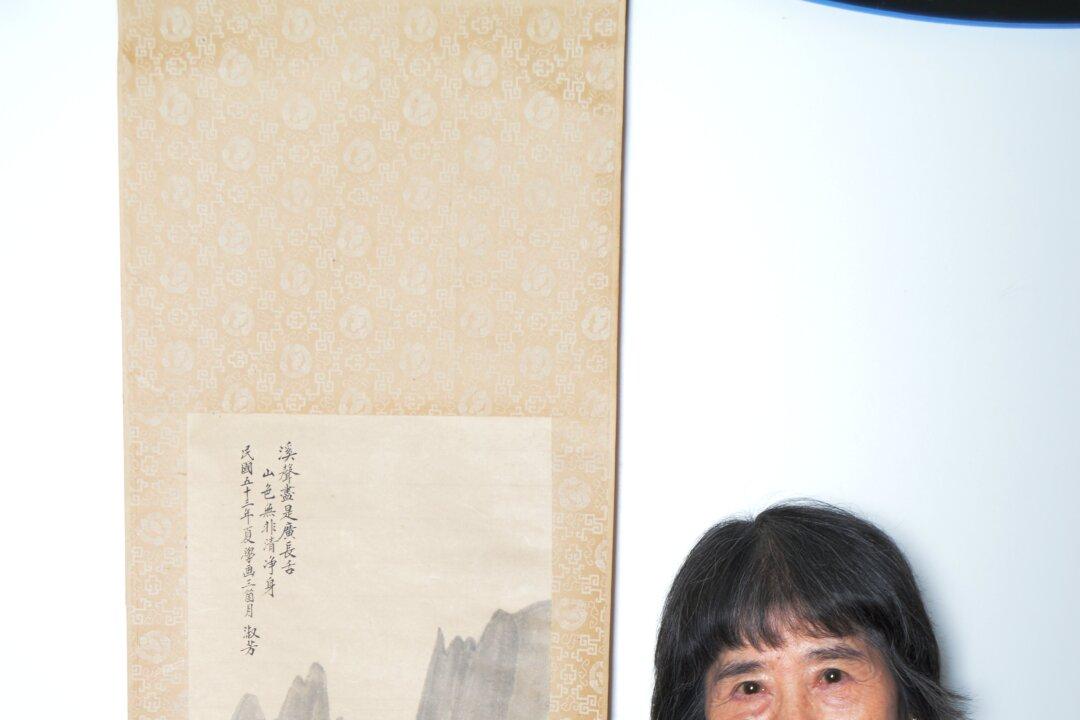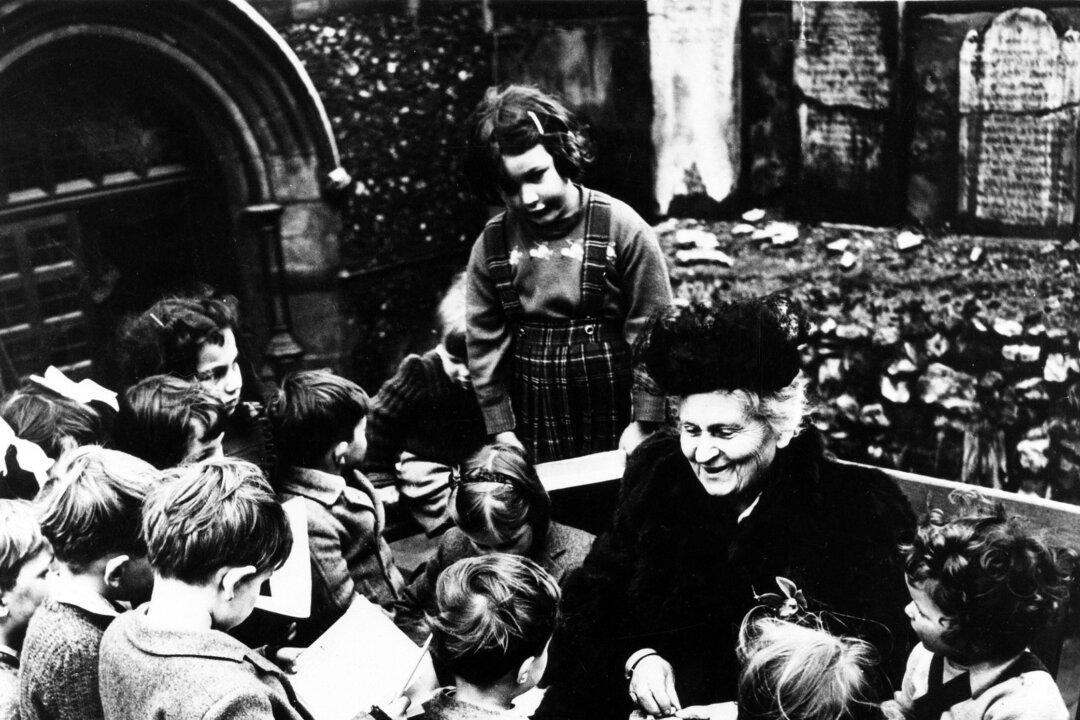SAN FRANCISCO—Thirty years after its founder’s death, the Exploratorium thrives more than ever. The initial idea of combining pleasantly crafted research exhibits with artworks that invite the visitor to inquire has been kept unchanged, while the contents have experienced an extension from physics to other realms of science.
Frank Oppenheimer, physicist and a brother of the renowned atom physicist J. Robert Oppenheimer, rejected in 1965 a vocation to the prestigious Smithsonian in Washington D.C., migrated to San Francisco instead, and followed his own vision of a science museum.
During a research stay in Europe, he had been impressed by European museums—for example, the Deutsches Museum in Munich—and had come to understand that the United States needed science museums to supplement the science taught in schools.
Pattern-Building Exhibit
Out of the hundreds of exhibits at the Exploratorium, ranging from mechanics, light phenomena, and mathematical topics, to challenging situations of communication theory, one of the visitors’s favorite exhibits is called “spinning patterns.” The hexagonal exhibit platform encompasses three freely rotating plates. Visitors can pour sand on top and create never-repeating sand patterns.
“Spinning patterns is an exhibit that has three stations where people can work simultaneously,” said Denise King, manager of a team of several exhibit developers at the Exploratorium. “We put up these barriers to give some control to the person who is at each spinning pattern station.”
Under a grant called Advanced Prolonged Engagement (APE), researchers studied “how to engage people to stay at exhibits longer and also to be social,” King said. “This three-station idea came from that grant. Visitors stay there longer because they are not competing with each other to try to make a specific pattern.”
Right behind the sand pattern exhibit, the machine shop is situated. Visitors are separated only by a fence and can directly interact with a developer or technician at work.
Oppenheimer had insisted in having the machine shop be part of the museum, without a wall, so that visitors may experience “the way a shop smells when you burn the wood in a saw, or smell the oil from a lathe,” as he said.
Artworks
“We have a lot of pieces in the museum that people probably at first glance think that they are exhibits but they are actually art pieces done by outside artists,” King said.
Scott Weaver, native of San Francisco, started to build his work “Rolling Through the Bay” 40 years ago. “I had a fourth-grade elementary teacher who made us build these little projects, and I loved it—even when I went home from school.”
“Look at this. Those are all toothpicks,” a child says to his parents, pointing at a several-foot-tall sculpture.
Weaver’s work shows tourist attractions and other well-known views of San Francisco such as the Coit Tower, a cable car, Lombard Street, Grant Avenue, and Chinatown, the Palace of Fine Arts, and the Golden Gate Bridge—all made from toothpicks.
The toothpick structure has 13 openings, one of which is the letter O of the Exploratorium sign, to place ping-pong balls and have them roll down inside the sculpture, following an intricate construction of pathways.
Weaver’s elementary school teacher had her students build abstract structures, “but I would put a ball in mine,” Weaver said. As a child, he “thought that’s how sculptures had to be built.” Only later did he realize that his sculpture was the only one of its kind worldwide that has this characteristic.
Weaver’s workplace is part of the Tinkering Studio at the Exploratorium’s South Gallery. Tinkering means “Think with your hands,” according to a display board, and, “Making things and developing ideas by hand helps us construct understanding.” Weaver has been working with his hands, toothpicks, and glue on and off for some 3,500 hours within the past 40 years.
Although he did it “to blow people’s minds of what can be made out of a single household item that I got hooked on as a 9-year-old,” he could hardly have anticipated his audience’s reactions.
People keep telling him things such as “this is the most amazing thing I have seen in my life,” and “This was worth the admission to come in here—just to see this.”
An 80-year-old lady, with tears in her eyes, said, “Oh my God, I grew up in this city, you know. This represents our city so well.”
More Space
The Exploratorium’s move from the Palace of Fine Arts to Pier 15 two years ago provides the museum with a much larger exhibition area, which encouraged it to move to additional content areas, such as psychology and ocean biology.
“We have two things we want to help visitors with when using our exhibits. One is inquiry and the other one is observation,” said King, who has a master’s degree in biology.
When creating her exhibit “Glass Settling Plates,” she took glass plates and put them into the Bay, exposing one side, and thus letting stuff grow on it.
At the exhibit, the visitor can navigate a microscope and observe the community of organisms. “It’s basically just a little motorized microscope, and you can explore all the living things that are on the plate,” she said. “Those little things that look like flowers, those are all little animals—this is a tunicate right here.”
The glass plate can be flipped over to see how the things have attached to the plates. “This barnacle right here actually has eggs inside … it is getting ready to release those, once they are fertilized.”
“You can just keep looking around and see more and more things,” King said, hoping that this kind of exhibit would encourage teachers to “facilitate exploration in the classrooms.”
Upstairs, over a bridge, the recently established observatory can be reached. It gives an outstanding view onto the Bay and the Bay Bridge and presents a lot of exhibits about observation in the natural and man-made environment.
Next Ideas
King, exhibit developer at the Exploratorium since 2001, is currently working on a multimedia kiosk to accompany the glass settling plate exhibit. People will be able to explore a virtual glass plate and will see a video with the things identified.
New ideas come from outside or from inside, she said. An exhibit developer may have done or seen something somewhere or may pick up a suggestion from a team member during a brainstorming session, suddenly deciding “that sounds like that has some potential. I am going to take that idea and make it into a physical thing, and try it with visitors,” King explained.
Weaver’s direction of creativity, too, is going from physics toward ocean biology. He thinks that next he may build a 7-foot dolphin that would hang from the ceiling. “It would be light-weight; it would be spacious. It would be quick, too. I could build it in a few months rather than 40 years,” he said, smiling.
At the Exploratorium, Everything Is Moving

Scott Weaver's several-foot-tall toothpick sculpture, exhibited at the Exploratorium, shows San Francisco City and has pathways for ping pong balls to roll down. CORNELIA RITTER/EPOCH TIMES
|Updated:



